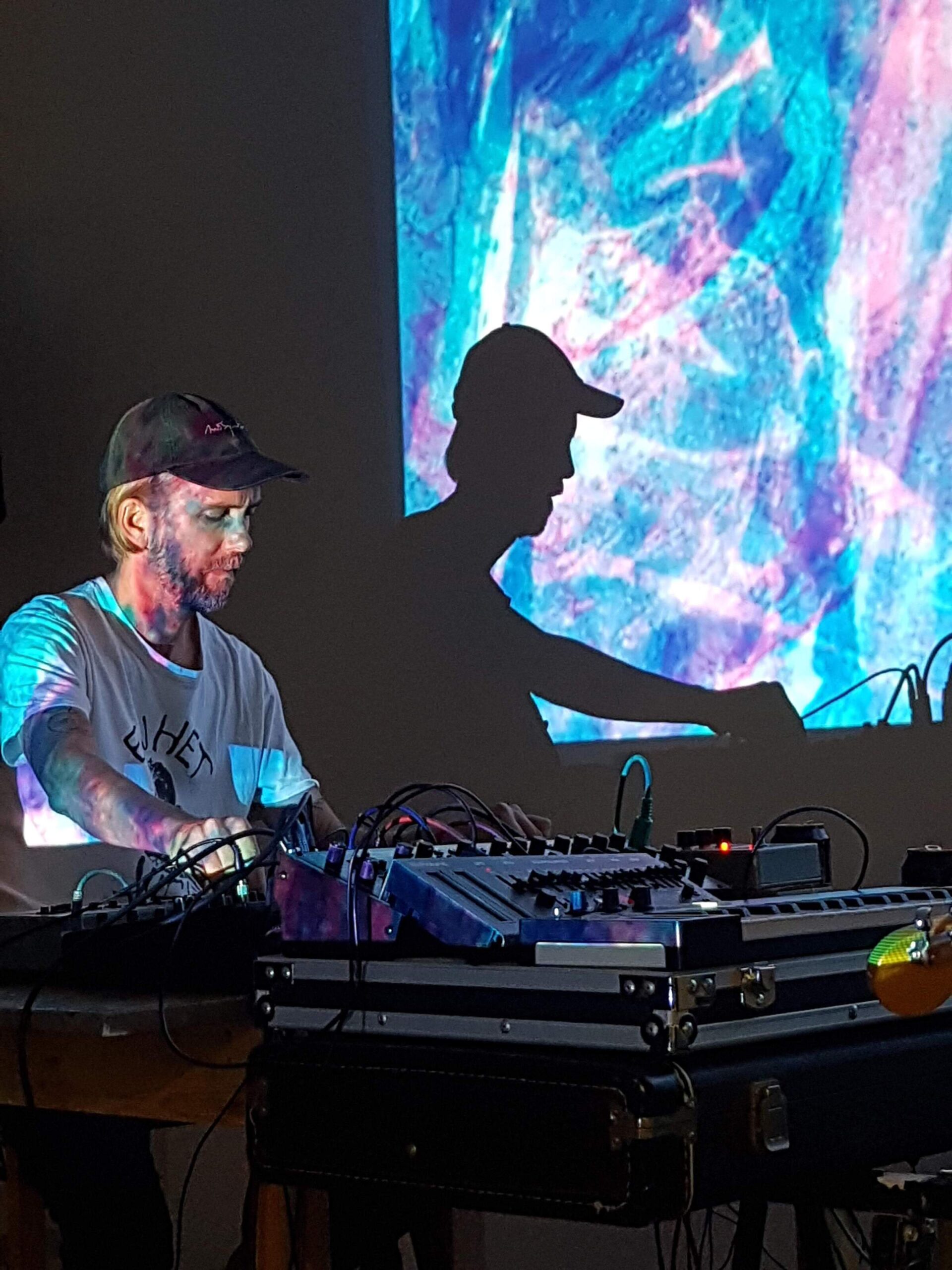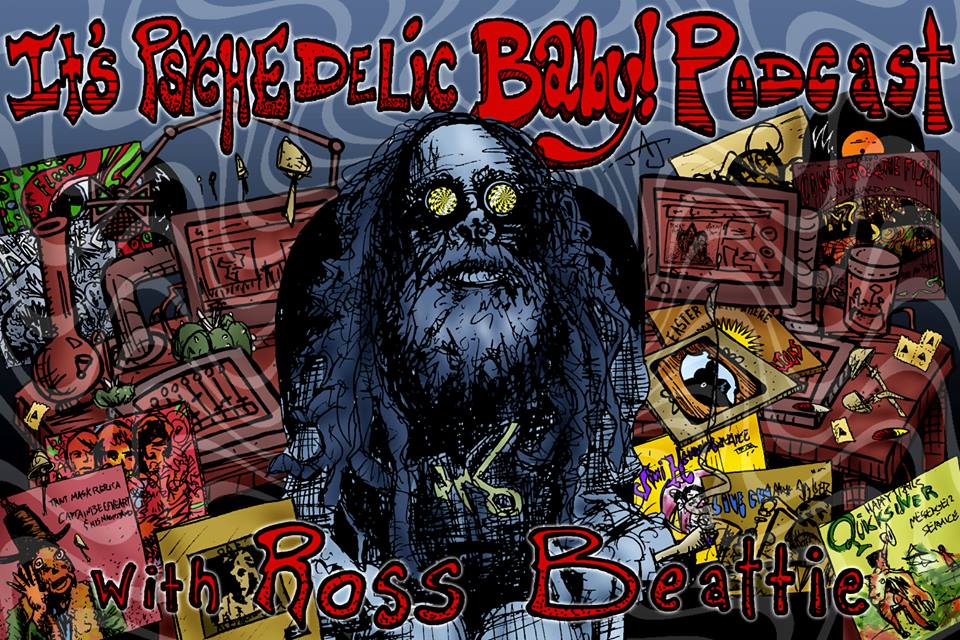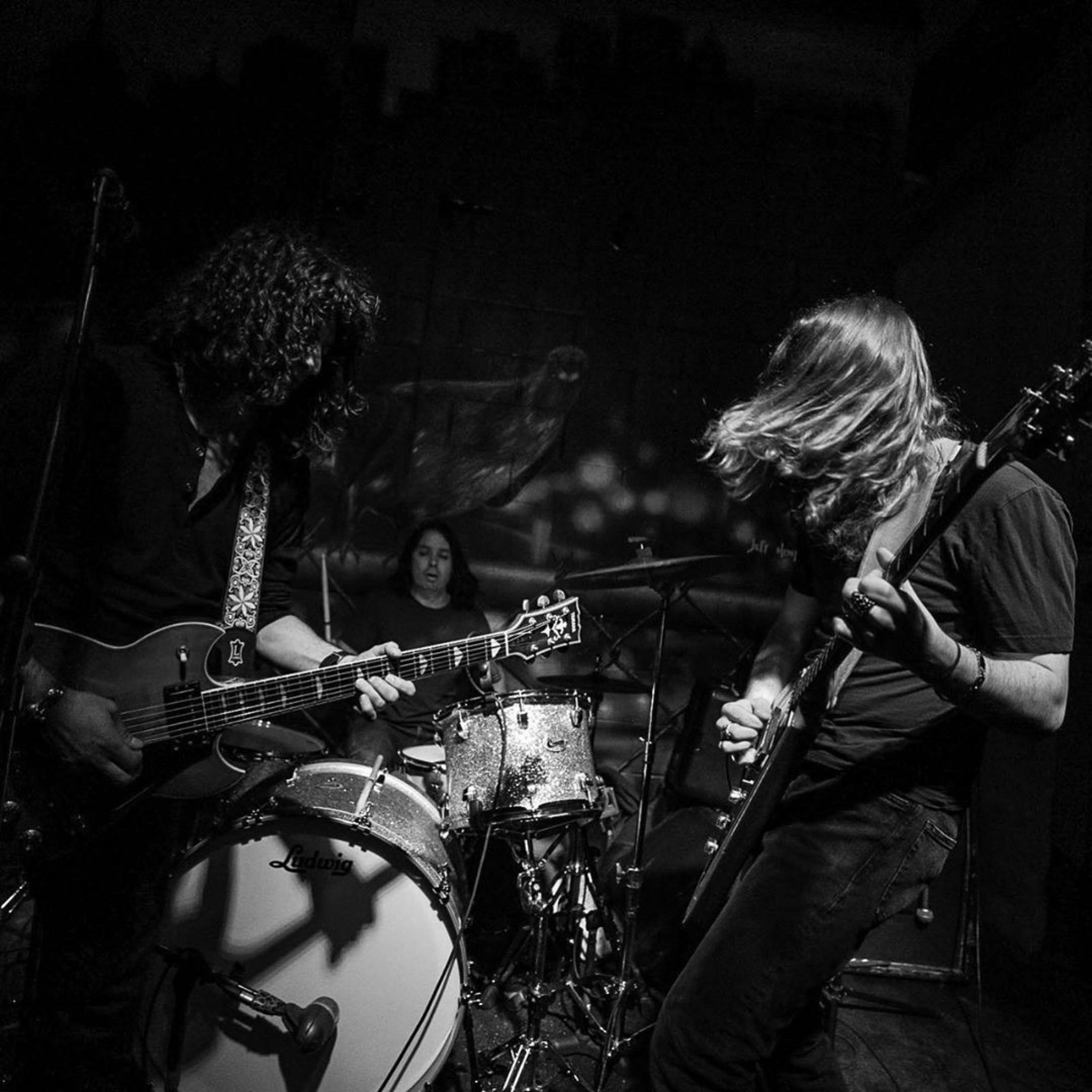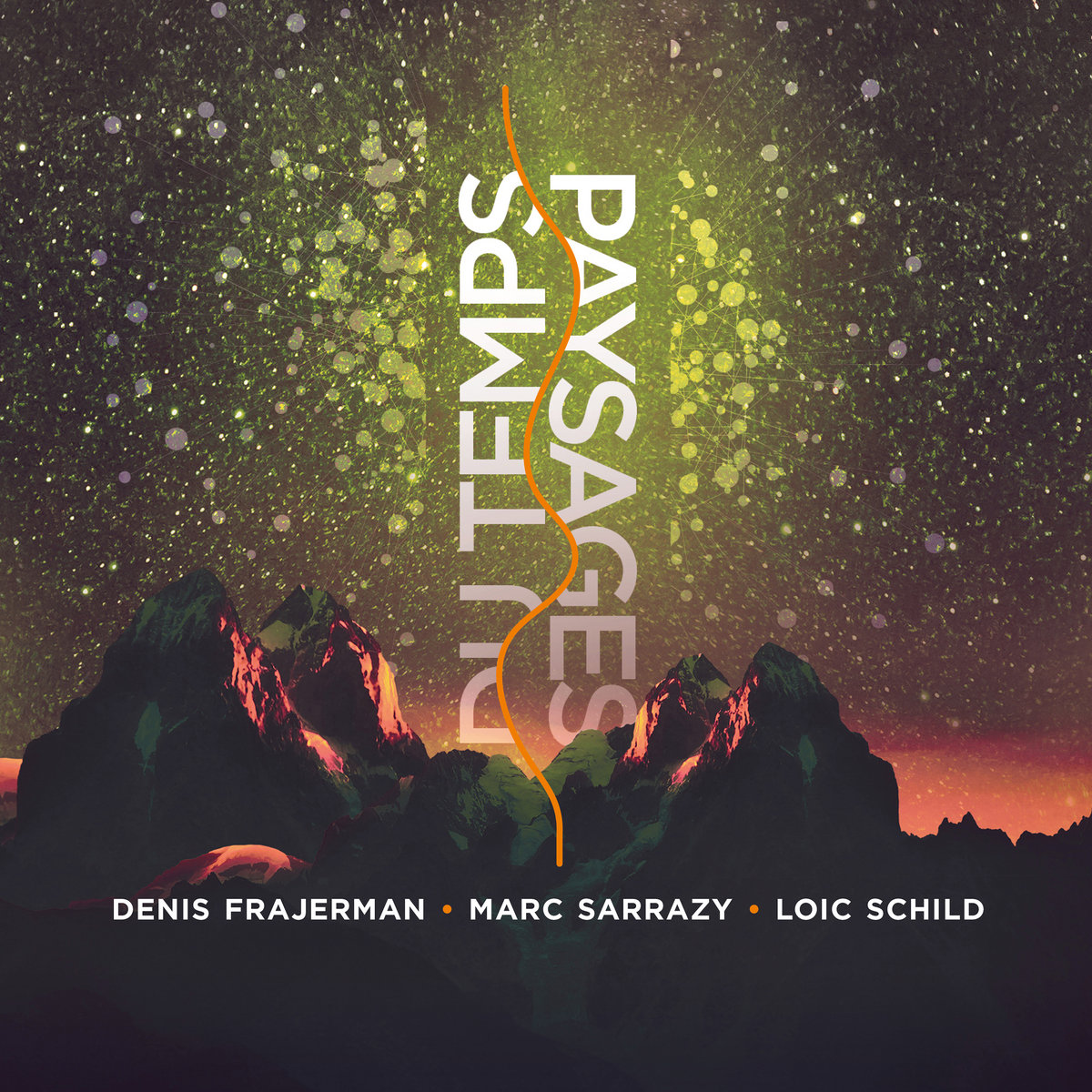Kroppskännedom | Interview | “Repetition is at the very core of everything I do”
Kroppskännedom, the project spearheaded by a seasoned Swedish musician, unfolds as a nuanced synthesis of past explorations and evolving sensibilities.
Rooted in the motorik pulse and melodic intricacies of Skeppet, it embodies a shifting landscape, weaving the lush textures of Body Awareness with the decay and abstraction of Amph. In this journey, repetition remains central, but it’s the drive for a more song-oriented approach that distinguishes Kroppskännedom. The music is shaped by tactile exploration, where rhythmic elements emerge from the pulse of Skeppet and the time signatures of EMS, forming a complex interplay of layers and textures. The result is a sound that balances restraint and decay, creating atmospheric tension through gradual shifts rather than static repetition. This progression reflects an ongoing search for tactile, bodily sound—one that mirrors the physicality of its creator’s process, while grounding the ethereal in the immediacy of lived experience.

“On the edge of falling apart”
Kroppskännedom doesn’t really sit comfortably in any one style of music… it’s got elements of drone, post-rock, tape decay experiments, and something almost song-like, but not quite. Do you ever think about a specific sound when you’re making music, or is it more about instinct and texture?
Andreas Malm: When I started recording for what was to become the Kroppskännedom project, the idea was to make song-like tracks using proper instrumentation, but at the same time, using the same tape loop-oriented approach that I had used before when recording with Amph (together with Peter Henning). In the process of making a new track, I don’t think so much about a specific sound, but rather on rhythm, structure, texture, slow movements, and how to combine these elements into something that resembles a song.
The album has this incredible way of making everything feel like it’s on the edge of falling apart… sounds degrade, loops almost collapse, but there’s still a strong sense of movement. Was there a particular mood or feeling you were trying to capture with these recordings?
I think the phrase “on the edge of falling apart” captures what I am trying to do. When making music as Kroppskännedom, there is this feeling or expression that I am always searching for. Something fragile, incomplete, decaying, that perhaps could be seen to represent a sense of loss or exile, or of fragmented memories.
You started out with a solo tape, and now this is your first vinyl release. Did the change in format affect the way you approached the album? Were there any moments where you thought, “Okay, this has to work on vinyl, so I need to change my approach”?
I didn’t really have the format in mind when making these recordings. In fact, much of the music on the tape and the LP were recorded during the same period, with some of the tracks on the LP (in fact, the entire B-side) being recorded in 2022 and early 2023 (with vocals from David recorded later), while a few tracks on the tape were recorded in the summer of 2023. The initial plan for my first release was to do a short self-released tape, but at some point during the spring of 2023, it suddenly felt necessary to split the recordings into two different releases. After the ‘Aktivt Förfall’ tape was released in August 2023, I continued recording for what I thought would be another self-released tape. Plans changed in September 2024, after I met Wim (of Morc Records) briefly when he visited Malmö that summer. The offer from Morc was to release the album as a CD, which kind of appealed to me, but then Wim suggested an LP release instead. It’s been a pleasure working with Morc, and I am very happy with how the LP turned out.
There’s a lot of emphasis on texture in your music—sounds feel stretched, eroded, and sometimes beautifully broken. What’s your process for shaping those textures? Do you rely more on chance and decay, or do you sculpt things very intentionally?
There is a great proportion of chance in everything I do, I would say. Like when recording drums directly to a tape loop on a dictaphone, the result will always be different from what I intended. Also, when combining loops of different lengths, interesting and unexpected things start to happen. I usually don’t re-record stuff that I am not satisfied with; either I discard it, or I use it in combination with something I feel satisfied with, and hopefully, the not-so-good-sounding part turns into something better. I also use old tape loops that have been used many times over the years, and some of them are in really bad condition but sound just right.
On Side A, the guitar feels almost like an ocean—waves swelling and receding—while Side B leans into rhythm a bit more. Was that contrast something you planned, or did it come naturally as the album took shape?
It’s funny because I never thought of the differences between the sides of the LP until I read what Wim wrote about the album. I like the idea of sound coming and going like waves, but there was never an intention of making this a more prominent feature on Side A. I guess I used this approach more in recent recordings.
You recorded everything in Malmö over several years. Did the place, the city itself, seep into the sound in any way? How does location impact your creative process?
In some sense, I guess the location does impact the sound of these recordings, but maybe more through previous projects that I’ve been involved in, that sort of spill over into Kroppskännedom (mostly the music of Amph). I am not originally from Malmö, but I’ve lived here for almost 20 years, and I can’t really see myself living anywhere else. At the same time, I see the Kroppskännedom recordings as being more connected to nature than to urban landscapes.
You brought in some great collaborators—Sofie Herner, David Roeder—who add these subtle but powerful accents to the album. What led you to invite them in, and how did their contributions shift the way you heard the tracks?
I got to know Sofie some 15 years ago when I was playing with my band Skeppet at Utmarken in Gothenburg. I’ve always loved her guitar playing, her sense of rhythmic expression, and the way her voice sounds on her recordings. In 2022, we started playing together with Eternal Music Society. We both play drums, and in playing drums together, I immediately felt this connection with her that gave me the idea of asking her to contribute guitar to some of my recordings. I love how Sofie’s guitars add melody to ‘Sluta,’ something that I would never have thought of adding to the mix. And Sofie’s voice brings in an element to my music that could never have been achieved in any other way, and I am very happy for that. I met David in Berlin in 2023, and later that year, he asked if he could contribute some vocals to my music. I sent him two suggestions and was very happy to see that he also added some instrumentation to another track. His singing was very different from what I had expected and brought an almost otherworldly strangeness to the track, I think, in a very good way. I feel very humbled and happy that two of my favorite musicians (with two of my favorite voices) wanted to contribute to the album.
‘Antares’ is the shortest track, but it somehow sets the whole atmosphere for the album. What was it about that track that made you feel like it should be the starting point?
For a long time, ‘Antares’ was a discarded idea that I didn’t think I was going to use at all. But when I assembled the tracks I had after the ‘Aktivt förfall’ tape had been released, it suddenly felt right to include ‘Antares’ as an opener for the album. I don’t really know why, but I guess there is something in the simplicity of the track that makes me think of it as an intro.
“Repetition is at the very core of everything I do”
Your music seems to exist in this space between repetition and change…loops that don’t quite stay loops, sounds that evolve in unexpected ways. Do you find yourself drawn to repetition as a concept, or do you see it more as a byproduct of your process?
Repetition is at the very core of everything I do, I would say. And it’s also very present in most things I listen to, in different ways. But at the same time, I enjoy how things are not allowed to just stay the same. I like things to decay or fall apart, and I guess this is how I tend to build up the tracks: with small changes, which eventually lead to the fading out of some of the initial sounds of the track. This is pretty much the same approach we’ve used in Skeppet and Amph, only with more emphasis on melodic repetition in Skeppet and with greater restlessness (or less patience) in Amph.
There’s an undeniable physicality to this music—torn amps, decaying tapes, the weight of sound itself. Does the idea of tactility or physical presence play a big role in how you approach composition?
I’m glad you can sense the physical presence in the music. I’ve come to realize that tactility and physicality are more important to me than I’d previously thought. In making music, it’s both about searching for sounds that have this dense and sort of bodily quality, but it’s also about the tactile experience of working with the instruments, cassette players, and old tapes.
If you had to describe ‘Kroppskännedom’ as a landscape rather than an album, what would it look like?
I like this question! At first, I found it hard to see a landscape that describes Kroppskännedom, but then one of my favorite places in Scania (the part of Sweden where Malmö is located) came to mind. It’s this peninsula in the northwestern part of Scania called Kullaberg. The scenery at Kullaberg is very dramatic, with steep cliffs meeting the roaring ocean. I also think of parts of the Oregon coast that I’ve visited, with these magical forests and the wild, not-so-welcoming ocean right next to each other.
You’re working with decayed, distorted, or worn-out sounds—does that reflect something about your perspective on time, memory, or permanence?
I guess the decaying and worn-out sounds are somewhat connected to themes relating to loss and exile, and hence also to time and the deceptiveness of memory. This isn’t really anything that I’ve tried to capture, or that I think of when making music, but at the same time, it’s something that I often find myself drawn to in music, movies, and literature.
What’s next for you? Are there any new ideas or directions you’re itching to explore after this album?
Right now, we’re about to do some recording with EMS, so most of the time I have for music will go into that. But I also have this idea for a Kroppskännedom tape that I will try to finish sometime this year. I’ve really enjoyed involving others in my music, and this is something that I want to explore further. Also, after a few years of mostly solo recordings, I miss the duo format. Hopefully, something exciting will come up.
For those unfamiliar with your work, what’s the best way to experience this album? Lights out, headphones on? Played on a barely functioning turntable with blown-out speakers? Something else entirely?
I never thought of that! I’ve mostly listened through headphones while riding my bike to work. I think I’d try listening to it outside, on speakers, in a small garden. Listening to it in bed could also be a good way.
If Wouter van Veldhoven produced an instrumental Unwound album, it might sound a bit like Kroppskännedom. How do you feel about that comparison? And what’s the weirdest or most unexpected comparison you’ve ever gotten?
I like that description very much, but I haven’t listened that much to Unwound, and I hadn’t heard Wouter van Veldhoven when I read it the first time. It made me curious, though. The most unexpected comparison came from David, who thought of Deftones, haha.

Could you walk us through the evolution of your past projects and how they led to what you’re creating as Kroppskännedom today?
Well, in some way, I think I see Kroppskännedom as the amalgamation of Skeppet, Body Awareness, Amph, and EMS. Maybe the present sound evolved something like this:
Skeppet started playing in 2007. It was all about repetition, in a melodic and kosmische way. Summer vibes. As Body Awareness, I wanted to focus more on texture, but the melodies and repetitiveness were also there, although leaning more towards some sort of Nordic melancholy, perhaps. I guess the “song” element in Kroppskännedom came from Skeppet and Body Awareness. Amph started playing in 2010, and it was all about texture, layers, and decay. Long, abstract compositions, sometimes quite noisy. As Kroppskännedom, I wanted to do something that would work as a continuation of Amph, but more song-based. When EMS formed in 2022, I started playing drums on a more regular basis. This definitely spilled over into the ongoing Kroppskännedom recordings. So the rhythmic elements in Kroppskännedom partly come from Skeppet, but even more from EMS, as do the odd time signatures.
Klemen Breznikar
Andreas Malm Instagram
Morc Official Website / Facebook / Instagram / Twitter / Bandcamp




